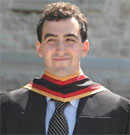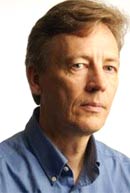Contents: 2024 | 2023 | 2022 | 2021 | 2020 | 2019 | 2018 | 2017 | 2016 | 2015 | 2014 | 2013 | 2012 | 2011 | 2010 | 2009 | 2008 | 2007 | 2006 | 2005 | 2004 | 2003 | 2002 | 2001
2010, 11
Simulations of the Devin and Zudin modified Rayleigh-Plesset equations to model bubble dynamics in a tube
language: English
received 20.05.2010, published 30.06.2010
Download article (PDF, 360 kb, ZIP), use browser command "Save Target As..."
To read this document you need Adobe Acrobat © Reader software, which is simple to use and available at no cost. Use version 4.0 or higher. You can download software from Adobe site (http://www.adobe.com/).
ABSTRACT
Micron-sized bubbles are used as contrast agents in biomedical ultrasound. While free bubbles are modeled using the Rayleigh-Plesset equation, their dynamics in tubes or vessels are not as well understood. In this paper, the dynamics of a microbubble in a cylindrical tube are simulated by two modified Rayleigh-Plesset equations: one derived by Y. B. Zudin in 1991 but not simulated, and another developed by C. Devin in 1961 but not expressed explicitly. The expressions are manipulated to a common form and shown to be nearly identical. The results of the simulations are compared to each other and various analytical models, as well as to experimental results. Both models show decreased resonant frequency and oscillation amplitude with decreasing tube radius. Agreement is found with established theories and limited experimental results. Thus, the equations may provide an effective tool for simulating bubble behavior in rigid tubes.
Keywords: Ultrasound, contrast agent, bubble, tube, vessel, Rayleigh-Plesset equation
15 pages, 6 figures
Сitation: Alexander R. Klotz, Kullervo Hynynen. Simulations of the Devin and Zudin modified Rayleigh-Plesset equations to model bubble dynamics in a tube. Electronic Journal “Technical Acoustics”, http://www.ejta.org, 2010, 11.
REFERENCES
[1] J. C. Atkisson. Models for acoustically driven bubbles in channels. Ph.D. Dissertation, 2008.
[2] J. L. Bull. The application of microbubbles for targeted drug delivery. Expert Opinion on Drug Delivery, 4(5):475–493, 2007. PMID: 17880272.
[3] C. F. Caskey, D. E. Kruse, P. A. Dayton, T. K. Kitano, and K. W. Ferrara.Microbubble oscillation in tubes with diameters of 12, 25, and 195 microns. Applied Physics Letters, 88(3), 2006.
[4] C. F. Caskey, S. M. Stieger, S. Qin, P. A. Dayton, and K. W. Ferrara. Direct observations of ultrasound microbubble contrast agent interaction with the microvessel wall. The Journal of the Acoustical Society of America, 122(2):1191–1200, 2007.
[5] M. Devaud, T. Hocquet, J.-C. Bacri, and V. Leroy. The Minnaert bubble: an acoustic approach. European Journal of Physics, 29(6):1263–1285, 2008.
[6] C. Devin. Resonant frequencies of pulsating air bubbles generated in short, open-ended pipes. US Navy Technical Report, 1961.
[7] J. B. Freund. Suppression of shocked-bubble expansion due to tissue con_nement with application to shock-wave lithotripsy. The Journal of the Acoustical Society of America, 123(5):2867–2874, 2008.
[8] X. Geng, H. Yuan, H. N. Oguz, and A. Prosperetti. The oscillation of gas bubbles in tubes: Experimental results. The Journal of the Acoustical Society of America, 106(2):674–681, 1999.
[9] K. Hynynen, N. McDannold, N. Vykhodtseva, and F. A. Jolesz. Noninvasive MR Imaging-guided Focal Opening of the Blood-Brain Barrier in Rabbits. Radiology, 220(3):640–646, 2001.
[10] N. W. Jang, S. M. Gracewski, B. Abrahamsen, T. Buttaccio, R. Halm, and D. Dalecki. Natural frequency of a gas bubble in a tube: Experimental and simulation results. The Journal of the Acoustical Society of America, 126(1):EL34–EL40, 2009.
[11] A. R. Klotz, L. Lindvere, B. Stefanovic, and K. Hynynen. Temperature change near microbubbles within a capillary network during focused ultrasound. Physics in Medicine and Biology, 55(6):15–49, 2010.
[12] W. Lauterborn and H. Bolle. Experimental investigations of cavitation-bubble collapse in the neighbourhood of a solid boundary. Journal of Fluid Mechanics, 72:391–399, 1975.
[13] T. Leighton. Derivation of the Rayleigh-Plesset equation in terms of volume. ISVR Technical Reports, 1994.
[14] T. G. Leighton and R. E. Apfel. The acoustic bubble. The Journal of the Acoustical Society of America, 96(4), 1994.
[15] P. Marmottant and S. Hilgenfeldt. A bubble-driven microuidic transport element for bioengineering. Proceedings of the National Academy of Sciences of the United States of America, 101(26):9523–9527, 2004.
[16] H. Miao and S. Gracewski. Coupled fem and bem code for simulating acoustically excited bubbles near deformable structures. Computational Mechanics, 42:95–106, April 2008.
[17] H. Miao, S. Gracewski, and D. Dalecki. Ultrasonic excitation of a bubble inside a deformable tube: Implications for ultrasonically induced hemorrhage J. Acoust. Soc. Am., 124:2374–2384, October 2008.
[18] H. N. Oguz and A. Prosperetti. The natural frequency of oscillation of gas bubbles in tubes. The Journal of the Acoustical Society of America,103(6):3301–3308, 1998.
[19] S. Qin and K. W. Ferrara. Acoustic response of compliable microvessels containing ultrasound contrast agents. Physics in Medicine and Biology, 51:5065–5088, Oct. 2006.
[20] S. Qin and K. W. Ferrara. The natural frequency of nonlinear oscillation of ultrasound contrast agents in microvessels. Ultrasound in Medicine and Biology, 33(7):1140–1148, 2007.
[21] E. Sassaroli and K. Hynynen. Resonance frequency of microbubbles in small blood vessels: a numerical study. Physics in Medicine and Biology, 50(22):5293–5305, 2005.
[22] E. Sassaroli and K. Hynynen. On the impact of vessel size on the threshold of bubble collapse. Applied Physics Letters, 89(12), 2006.
[23] E. Sassaroli and K. Hynynen. Cavitation threshold of microbubbles in gel tunnels by focused ultrasound. Ultrasound in Medicine and Biology, 33(10):1651–1660, 2007.
[24] J. D. Sherwood. Potential flow around a deforming bubble in a venturi. International Journal of Multiphase Flow, 26(12):2005–2047, 2000.
[25] E. Stride and N. Safari. Theoretical and experimental investigation of the behaviour of ultrasound contrast agent particles in whole blood. Ultrasound in Medicine and Biology, 30(11):1495–1509, 2004.
[26] Wu. J. Theoretical study on shear stress generated by microstreaming surrounding contrast agents attached to living cells. Ultrasound in Medicine and Biology, 28:125–129(5), January 2002.
[27] T. Ye and J. L. Bull. Microbubble expansion in a flexible tube. Journal of Biomechanical Engineering, 128(4):554–563, 2006.
[28] Y. B. Zudin. Analog of the Rayleigh equation for the problem of bubble dynamics in a tube. Journal of Engineering Physics and Thermophysics, 63:672–675, July 1992.
 |
Alexander R. Klotz is currently a graduate student in the department of physics at McGill University in Montreal. He attained his B.Sc. in physics at Queen's University before researching bubble dynamics for therapeutic ultrasound at Sunnybrook Health Sciences Centre in Toronto. He is currently studying the behavior of DNA in nanofluidic environments. e-mail: klotza(at)physics.mcgill.ca |
|
 |
Kullervo Hynynen is the director of the Department of Imaging Research at Sunnybrook Health Sciences Centre in Toronto. He is also a professor in the Department of Medical Biophysics at the University of Toronto. He attained his B.Sc and M.Sc. degrees at the University of Kuopio in Finland and his Ph.D. at the University of Aberdeen in the United Kingdom. His research interests include therapeutic ultrasound and MRI thermometry. |
|
